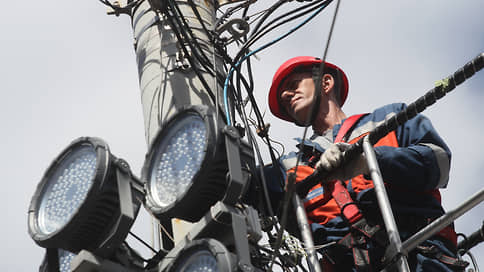The Association of Small Operators of Russia asks to clarify the methodological recommendations of the FAS on setting tariffs for access to the infrastructure of telecommunication networks
[ad_1]

The Association of Small Operators of Russia applied to the government with a request to clarify the methodological recommendations of the FAS on setting tariffs for access to the infrastructure of telecommunication networks. Members of the association note that due to the lack of a definition of the term “access point”, network companies increase the cost of their services. The Ministry of Digital Transformation is “already working on resolving the issue,” since artificially inflating prices for access to infrastructure can limit the development of communication networks in remote regions.
Kommersant got acquainted with the letter of the Association of Small Operators of Russia (AMOR, unites 50 communication providers), sent on May 25 to the presidential administration, Prime Minister Mikhail Mishustin, Chairman of the State Duma Vyacheslav Volodin and Head of the Ministry of Digital Development Maksut Shadayev. Association members are asked to define the concept of “access point”, recorded in the guidelines for setting tariffs for access to the infrastructure of telecommunication networks, which the FAS approved on May 18, 2023.
As the operators explain, until 2023, in the tariffs of PJSC Rosseti Moscow Region for the service of providing attachment points for placing an optical cable, the calculation unit was one support. But now the organization has changed the wording “per pole per month” to “per wire per pole per month”. As a result, the cost of access has multiplied depending on the number of cables connected to one support, the letter says. When placing four cables on one support, the cost of providing Internet services increases fourfold, and when placing ten cables, it increases by an order of magnitude, says a VNET representative (works in Moscow and the Moscow region): “The main problem is with the monopoly high and economically unjustified current tariff for placement services, if you pay for each cable, and not for a pole, more than 50% of the revenue from the subscriber will go towards paying for the service of placing networks on poles.
The Ministry of Digital Transformation told Kommersant that they had read the appeal of AMOR and were “dealing with the issue”: “We consider it necessary to fix the exact definition of the concept of “access point”, since such an artificial increase in prices for infrastructure rental limits the development of communications, especially in remote settlements countries”. The response of the presidential administration to the appeal of AMOR (Kommersant has it) states that the documents necessary for considering the appeals were requested, and the answer will be sent before July 23.
PJSC Rosseti told Kommersant that, according to the methodological recommendations of the FAS, it is recommended to calculate the tariff for providing access to associated infrastructure facilities using one of two formulas, depending on the unit of measurement chosen by its owner – one access point and (or) one kilometer . At the same time, when calculating the tariff for an access point, the total number of supports is indicated. According to Rosseti, the change in the name of the unit of measurement of the service did not affect the procedure for determining the price of the service: “In order to obtain the official position of the regulator, we plan to seek clarification from the FAS.”
The technical problems listed in the letter can be resolved through negotiations, Artemy Moroko, founder of telephony for business Sipuni, believes. In his opinion, “large operators will not notice an increase in costs, but for small representatives of the industry the situation may turn out to be critical.” To maintain the current level of profitability, small telecom operators will have to increase the cost of services, shifting the increase in costs to subscribers, adds Alexey Boyko, MForum analyst: “If the service provision model ceases to be profitable, the operator will be forced to curtail the provision of Internet services in many localities, which is unacceptable” .
[ad_2]
Source link





